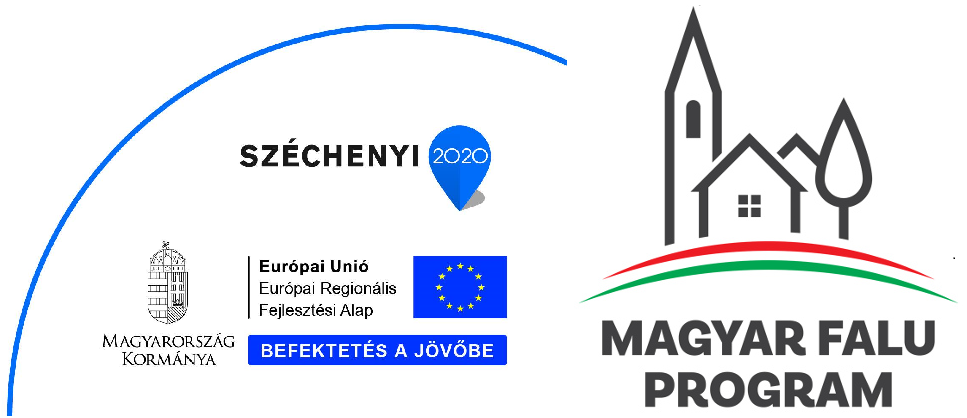Area of Felsonyek (or simply: Nyek; pronounced as Felshoe-Nje:k) is a settled area from the very early times; stone-age, iron-age, bronze-age findings are ample from this territory. Celts built a fortress on the hill called „Varhegy” („Fortress Hill”) in the IV. century BC. After the Celts, Romans conquered this area. From 8th AD, the settlement is an important garrison on the military road connecting Aquincum, the capital of province Pannonia and Sopianae, an important town SE of Felsőnyék. (Today: Pécs). Nyék’s Latin name is Fortiana; and the road near Garab Hills in Felsőnyék is called „the military road” even today. The „river” Sio crosses the territory of the village; the canal was built also by the Romans.
During the Great Migration, great many tribes and nationalities crossed this area. After the Magyars conquerred the Carpatian Basin in the end of the IX. century, Arpad’s tribe „Megyer” settled here. The tribe „Nyék” was given territory in the Eastern part of the Carpatian Basin near the river Temes first; and it was King Stephan the Saint –deliberately wishing to dissettle the tribes – who gave this territory to one of the fractions of the Nyék tribe. (There are 14 different settlements in the Carpatian Basin whose name still preserves „Nyék” – some of those are in today’s Serbia, Slovakia, Austria and Ukraine. „Felső” Nyék means „Upper Nyék” – the village is located in the uppermost – Nordernmost – part of the County Tolna; the counterpart – „Lower Nyék” or Alsónyék - is in the ’lower’, Southermost part of it.) In the XII. century Nyék belongs to the Dömös Provostry and is an independent parsonage. Ladislaus I. settles pechenegs (a Turkish tribe believed to be relatives to the Magyars) in Nyék’s territory. First written memory of „Nyék’ is dated to 1315.
A new (soil)fortress is built on the Varhegy Hill in the XII. century; as it is also mentioned in 1315. The fortress later becomes property of the Csak family (a mighty family in the Nordern part of Hungary, ready to build their own kingdom within the kingdom). The family – later named as Domby or Dombay family – remains the landlord till 1557. After that, family Werbőczi is Nyék’s landlord till the territory is shifted into the hands of one of the most distinguised Hungarian noble families, the Battyanyi’s. In 1841 Count Montenuovo comes to rule Nyék and it remains in their ownership up till 1945.
Right after Joseph II. issues the patent giving Protestants equal rights, a Calvinist church is built in Nyék. (1792 - 1796). In 1841, Nyék again becomes an independent parsonage. Walls of present Catholic church contain remainings from the XV. century.
After Werbőczi and Dombay (both being famous jurists) Nyék acquires ’juristic flare.’ That feature becomes even stronger, when – after defeat of the 1848 revolution – Ferenc Deak, the most famous jurist in Hungary (’The Wise Man of the Nation’) hides in Nyék. (The ’Deak Wine House’ belongs to the cultural heritage of Hungary and is protected up until now. Deak was hiding in a small house in one of Nyék’s wineyards.) Horhi, part of Nyék at that time, is the birthplace of Peter Melius Juhasz; the first Calvinist bishop of Debrecen, centre of the Hungarian Calvinist Church. Famous writer of the XIX. Century, Gereben Vas, was born in then yet another part of Nyék, in Fürged. Most of his books depict life in area around Nyék: Fürged, Hídvég. Great-gandson of Vörösmarty, one of the famous Hungarian poets of the XIX. century also lived in Felsőnyék.
Canal Sio was regulated in 1865, thus decreasing the moorland along it. Still, some remains up till now; the ’Kollát Meadow’ is an interesting moor protected by law – the habitat of several unique plants and birds.
Felsőnyék is a tipical agricultural settlement: apart from a short period, no industry has ever been here. Today there are around 1100 inhabitants living in the village. Population steadily decresed in the former years; however, it became stagnating lately.
Apart from the ’Deak Wine House’, ’Cziraki House’ is also part of the national cultural heritage there are yet another twenty houses and objects that are protected by local law.







 History
History

